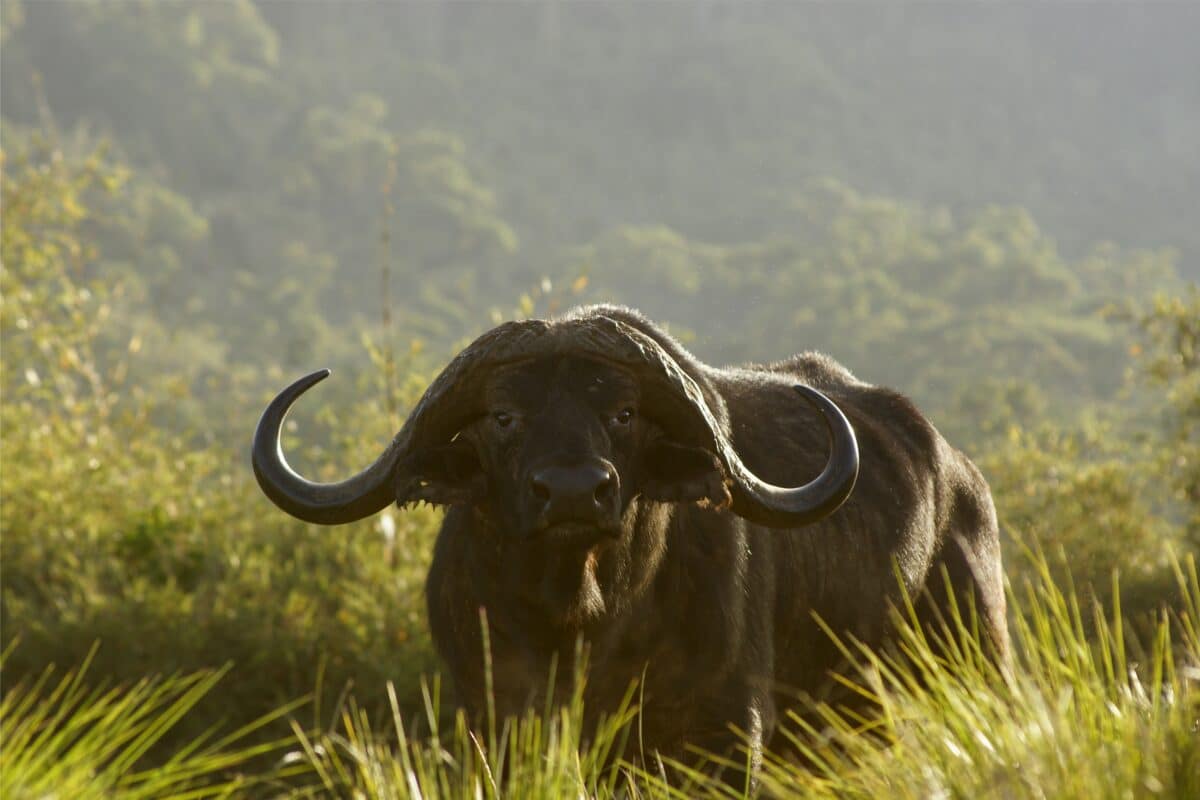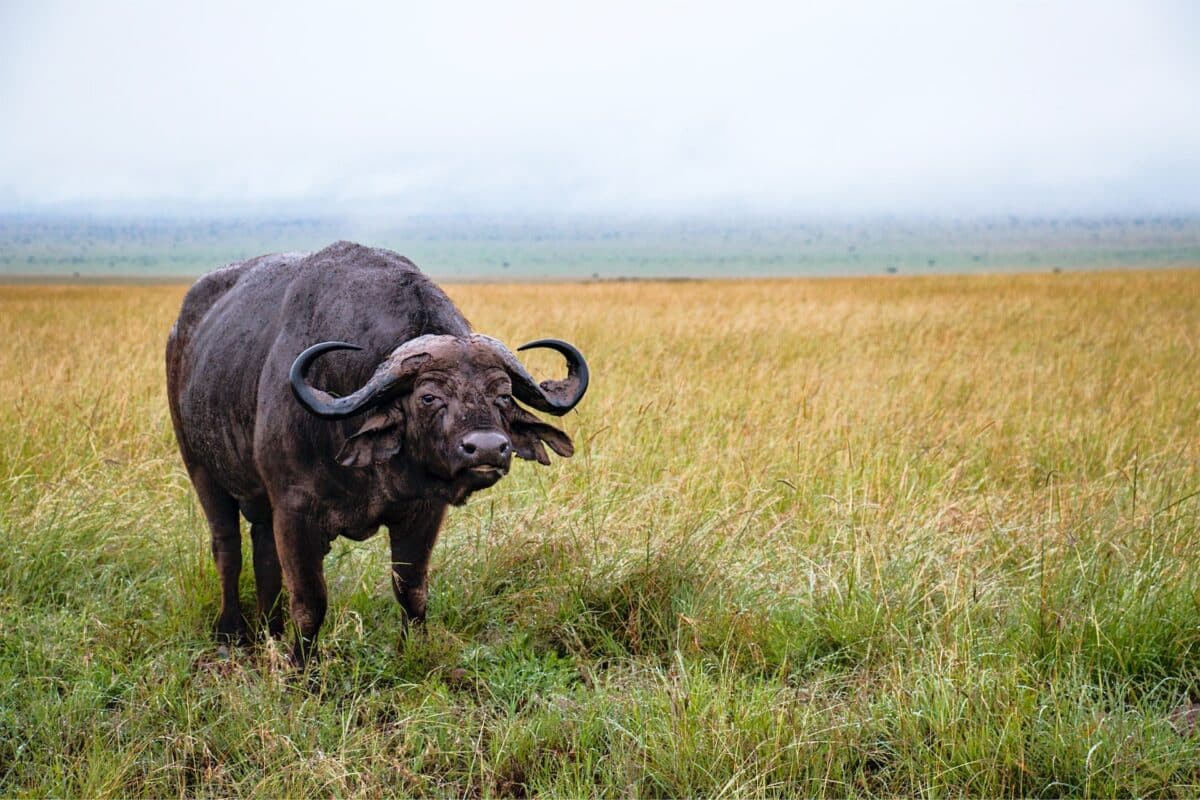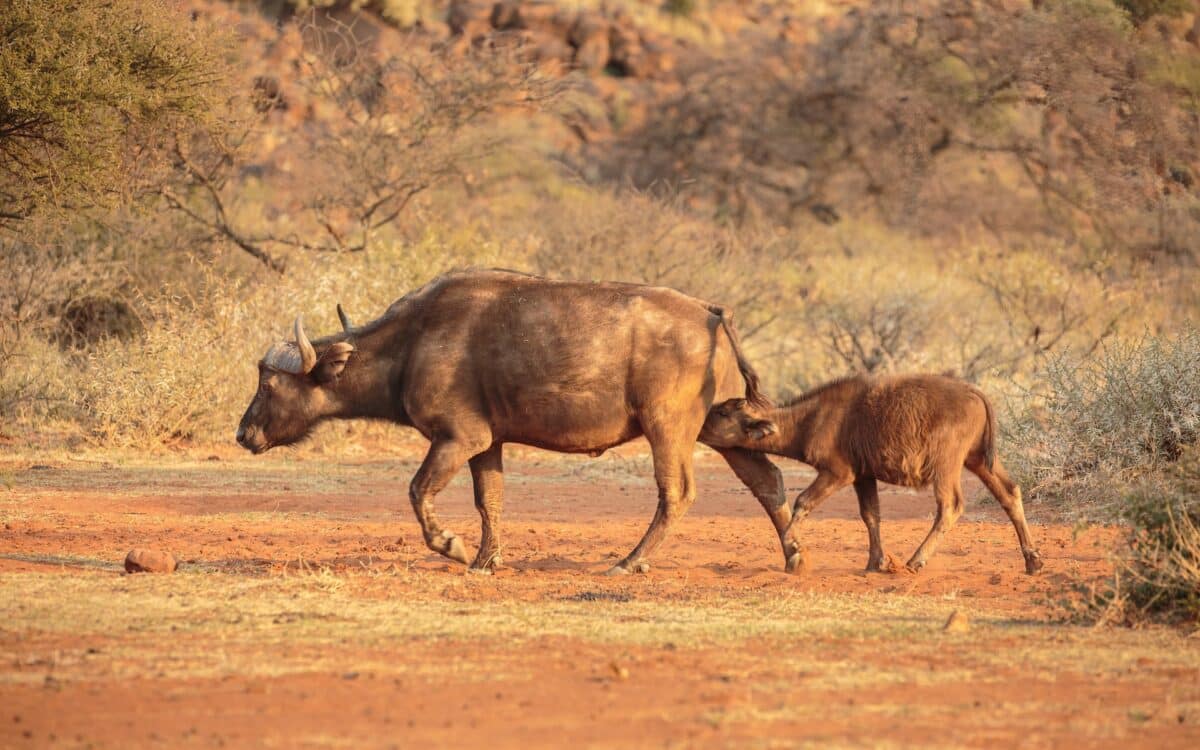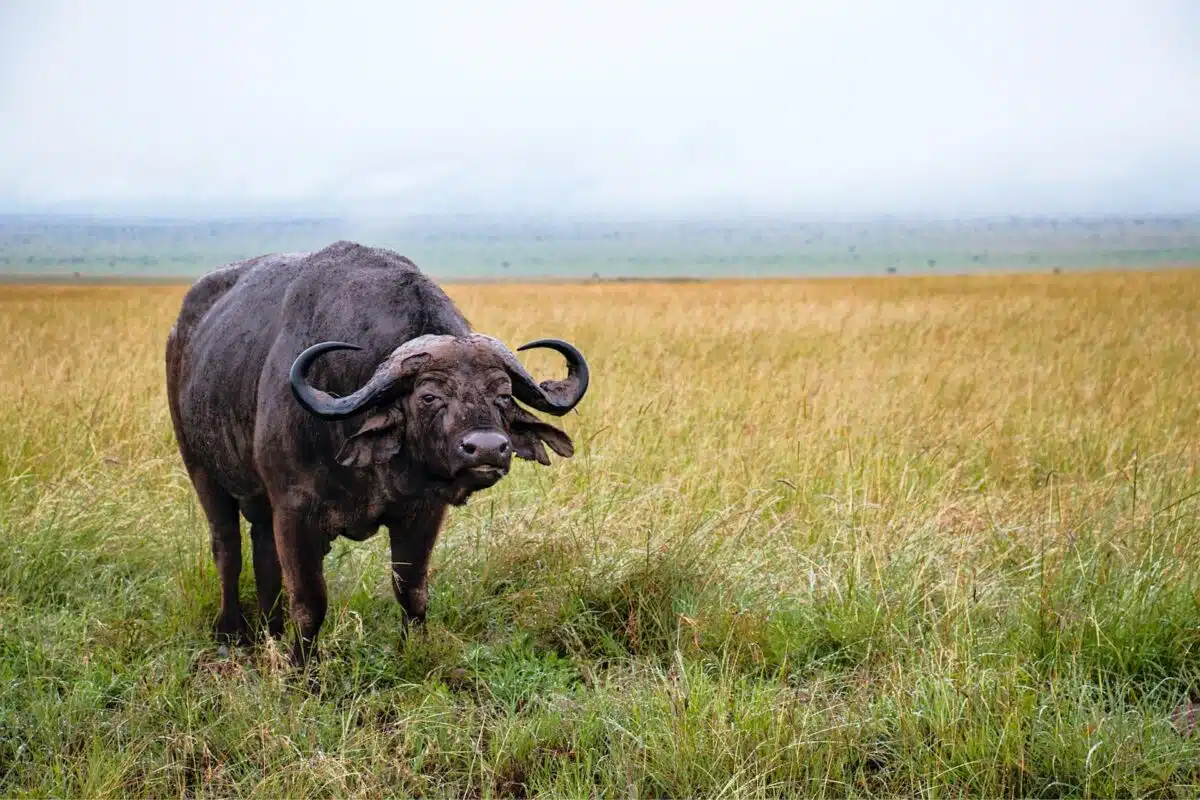When it comes to large land animals, few can match the impressive size and power of the African buffalo. These massive creatures are native to sub-Saharan Africa and can weigh up to 1,000 kilograms (2,200 pounds). In fact, the African buffalo is considered one of the “Big Five” game animals in Africa, along with the lion, leopard, rhinoceros, and elephant.
Today, we explore the world of the African buffalo, focusing on one exceptional specimen in particular: the heaviest African buffalo ever found. While many large and impressive African buffalos have existed throughout history, this particular buffalo stands out as the heaviest ever recorded.
So, get ready to learn about the discovery of the heaviest African buffalo ever found.
Want to jump ahead? Click below
The African Buffalo

The African buffalo, which can also be referred to (scientifically) as Syncerus Caffer, is a large, herbivorous mammal that is found in sub-Saharan Africa. These animals are well-known and well-loved for their humongous, impressive strength and unpredictable behavior, which has made them a sought-after trophy for big game hunters. Let’s consider further the key characteristics of the African buffalo.
Physical Characteristics
African buffalos are massive animals that can weigh up to 1,000 kilograms (2,200 pounds) and stand up to 1.7 meters (5.5 feet) at the shoulder. They have dark, shaggy fur ranging in color from dark brown to black, and both males and females have heavy, curved horns that can span up to 1.2 meters (4 feet) in length.
Habitat and Distribution
African buffalos are primarily found in sub-Saharan Africa, where they inhabit various habitats, including savannas, grasslands, and forests. They are social animals typically found in large herds of up to several hundred individuals. African buffalo populations are currently stable. Although they remain generally threatened by habitat loss and poaching for their meat and hides.
Size Comparison
While the African buffalo is certainly an impressive animal, it is not the world’s largest buffalo or bison species. In North America, the American bison (Bison bison) is the largest land animal. Furthermore, it can weigh up to 1,000 kilograms (2,200 pounds) for males. As well as up to 540 kilograms (1,200 pounds) for females.
In comparison, the African buffalo tends to be larger. Males typically weighing between 500 and 900 kilograms (1,100 and 2,000 pounds). Females weighing between 300 and 700 kilograms (660 and 1,540 pounds).
For the American bison, you can check out the National Geographic website, which provides detailed information about this iconic North American animal.
The Heaviest African Buffalo Ever Found

While the African buffalo is an impressive animal in its own right, a few exceptional specimens stand out from the rest. This section will explore the story of the heaviest African buffalo ever found and learn more about this incredible animal.
Discovery
In 1957, a game hunter named John Alexander Hunter encountered and shot the heaviest African buffalo ever documented in Tanzania. This remarkable buffalo weighed a staggering 1,267 kilograms (2,794 pounds).
The incident took place in the Selous Game Reserve located in the southern region of Tanzania, known for its abundant population of African buffalo. Hunter and his team were astounded by the extraordinary size of the animal, recognizing it as an exceptional specimen.
Implications
The discovery of the heaviest African buffalo ever found has important implications for our understanding of these animals. Furthermore, their potential for growth and development. While African buffalos are already among the largest land animals in the world, this particular buffalo shows that there is still much we still need to learn about their growth and size potential.
Additionally, the discovery of this animal has brought attention to the issue of big game hunting. It is a controversial practice that has been widely debated in recent years. Some argue that hunting helps control animal populations and provides funding for conservation efforts. But others believe it is cruel and unethical.
The debate surrounding big game hunting is fascinating. Additionally, you can check out Wikipedia, which provides a detailed and in-depth overview of the issue while exploring the historical perspective and related issues.
The Importance of Large Animal Conservation

Large animals like African buffalos play a vital role in the ecosystems they inhabit. Let’s discuss the importance of large animal conservation and how we can protect these incredible creatures.
Ecological Significance
Large animals like African buffalos are often called “keystone species.” They are hugely important in adding to and maintaining the ecosystem. These animals help to control plant growth by eating large amounts of vegetation. This helps to prevent certain plant species from taking over and dominating the landscape.
In addition to their role in controlling plant growth, large animals like African buffalos also serve as prey for carnivores like lions and hyenas. By keeping predator populations in check, these animals help to maintain a healthy balance within their ecosystem.
Threats to Large Animal Populations
Despite their importance, large animal populations worldwide face various threats that risk their survival. Habitat loss and fragmentation, poaching, and climate change are not the only factors contributing to the decline of many large animal populations.
For example, African buffalos are facing various threats, including habitat loss due to human encroachment and competition for resources with livestock. Additionally, illegal poaching for meat and horns has taken a toll on African buffalo populations in some areas.
Conservation Efforts
Fortunately, many organizations and individuals are working to protect and conserve large animal populations worldwide. These efforts include habitat restoration and protection, anti-poaching patrols, and community education programs aimed at promoting sustainable land use practices.
One excellent example is the existence and creation of the American Bison Society. This was founded in 1905 with the goal of restoring bison populations in North America. Today, the bison population in the United States has rebounded to an estimated 400,000 animals. This is in part to the efforts of the American Bison Society and other conservation organizations.
Wrapping Up with Heaviest African Buffalo Ever Found
The African buffalo is a fascinating and powerful animal that plays a vital role in its ecosystem. From its imposing physical appearance to its unique social behaviors, this species has captivated the interest of animal enthusiasts and conservationists alike. In this article, we’ve learned about the heaviest African buffalo ever found and explored the importance of protecting large animal populations around the world.
It’s clear that the conservation of large animals like African buffalos is critical to maintaining the balance of our planet’s ecosystems. We can all contribute to protecting these incredible creatures through habitat restoration, anti-poaching efforts, and community education programs.
A multiplicity of resources are publicly available online if you think of African buffalos or getting involved in conservation efforts. For example, the African Wildlife Foundation is an excellent resource for those seeking to support African conservation efforts.
Together, we can work to protect and conserve large animal populations worldwide and ensure that these incredible sea creatures continue to thrive for generations to come.
Thanks for following along with me! I hope you enjoyed reading about these two entertaining animals.
Next up in the animal kingdom:
- Watch The Record-Breaking Size of the World’s Largest Pitbull Ever - April 16, 2024
- Watch Hippo Mother Chases Crocodiles To Protect Her Dead Child - April 15, 2024
- Watch Elephants Ask Rescuer To Play Piano - April 12, 2024


